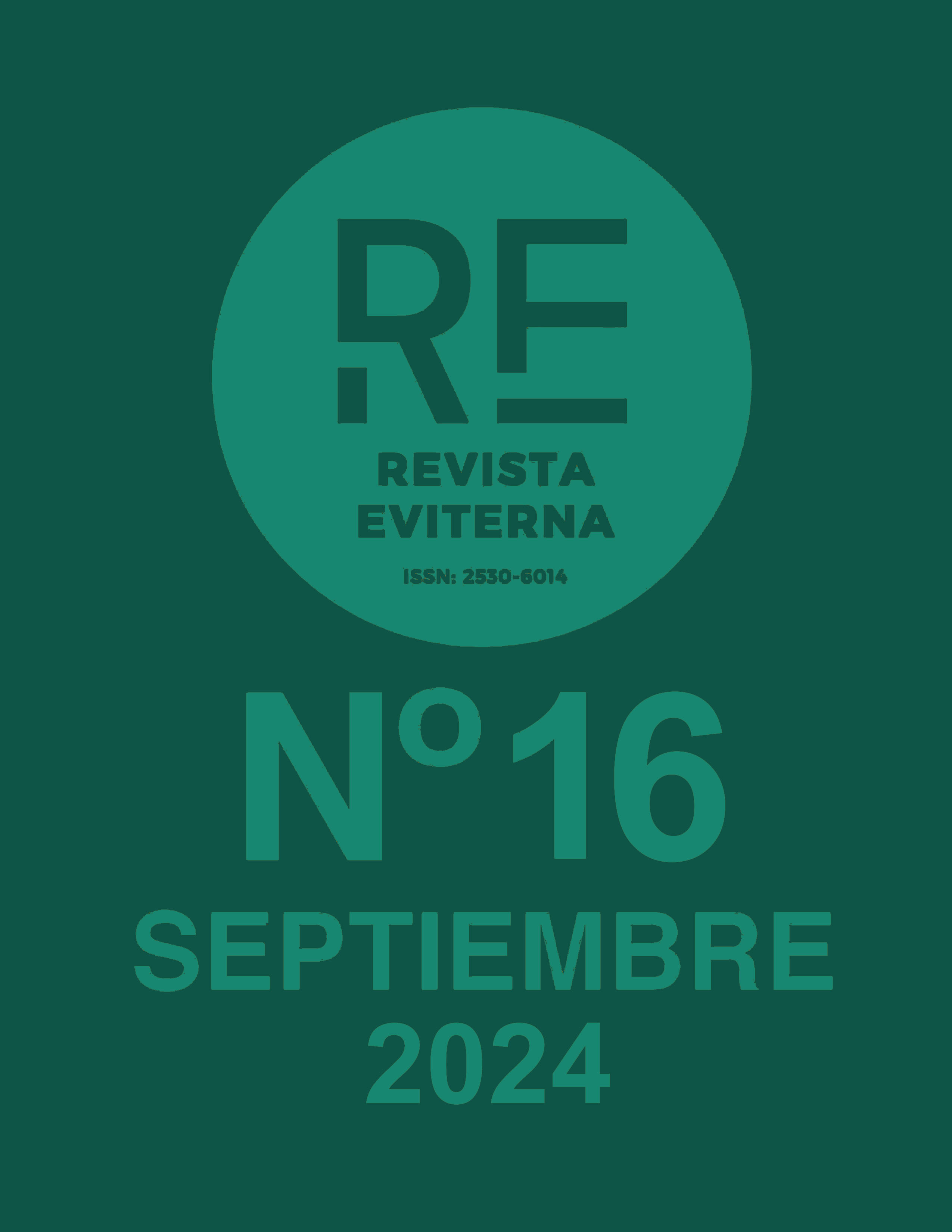Life through the screen
When the meme becomes tradition
DOI:
https://doi.org/10.24310/re.16.2024.20151Keywords:
Digital culture, Visual Culture, Memes, Tradition, HumorAbstract
In the immensity of our screen we find a new world, a society without barriers, diverse and in constant evolution, in which the community shares all kinds of images; the interactive coexistence is so broad that it even encompasses different cultures and traditions. For this reason, this article aims to focus on virtual culture through its digital folklore, using elements of this discipline, as well as semiotics, which are argued to be the main methodological tools. Our object of study will be humorous images, specifically the so-called internet memes, and their role as ‘cultural icons’ in contemporary digital folklore. We will analyse their development in the context of web 2.0, with special attention to the case of the Sam Va Lentin meme in Spain. This motif has marked, year after year, the date of 14 February in the national virtual panorama, transforming it into a day where humour, parody, satire and irony take on a leading role. This digital rite, framed within the concept of screenlore, has given rise to novel and original variants, thus establishing itself in the collective memory. Furthermore, the study of internet memes, and in particular the one mentioned above, allows us to better understand the dynamics of digital culture and its impact on society. Through this analysis, we hope to contribute to a deeper understanding of how these types of iconographic resources are integrated and evolve within the coordinates of cyberspace.
Downloads
Metrics
Publication Facts
Reviewer profiles N/A
Author statements
Indexed in
-
—
- Academic society
- N/A
- Publisher
- Universidad de Málaga
References
Bergson, H. (1947). La Risa: Ensayo sobre la significación de lo cómico. Losada.
Bonazzoli, F. y Robecchi, M. (2013). De Mona Lisa a los Simpson. Porqué las grandes obras de arte se han convertido en iconos de nuestro tiempo. Planeta.
Bordería Ortiz, E., Martínez Gallego, F. A. y Gómez Mompart, J. L. (2015). El humor frente al poder: prensa humorística, cultura política y poderes fácticos en España (1927-1987). Biblioteca Nueva.
Cortázar Rodríguez, F. J. (2014). Imágenes rumorales, memes y selfies: elementos comunes y significados. Iztapalapa: Revista de Ciencias Sociales y Humanidades (77), 191-214. http://dx.doi.org/10.28928/ri/772014/aot3/cortazarrodriguezfj
Davison, P. (2012). The Language of Internet Memes. En Mandiberg, M. (Ed.). The social Media Reader, 120-134. New York University Press.
Dawkins, R. (1993). El gen egoísta. Las bases biológicas de nuestra conducta. Biblioteca Científica Salvat.
Eco, U. (2000). Tratado de semiótica general. Editorial Lumen.
Etreros, M. (1983). La sátira política en el siglo XVII. Fundación Universitaria Española
Freud, S. (1905 [1969]). El chiste y su relación con lo inconsciente. Alianza.
Galván Freile, F. (2004). Entre la diversión y la transgresión: A propósito del humor en las artes plásticas medievales. Cuadernos del CEMYR (12), 37-68. https://doi.org/10.25145/j.cemyr.2004.12
García-Page Sánchez, M. (2010). El calambur, una propuesta de definición. Moenia: Revista lucense de lingüística y literatura 16, 167-194.
González, G. y Rivera Magos, S. (2020). Virus y viralidad: Los memes durante la Pandemia por COVID-19. Virtualis: revista de cultura digital 21 (11), 27-51. https://doi.org/10.2123/virtualis.v11i21.347
Hodgart, M. (1969). La sátira. Guadarrama.
Hobsbawn, E. J. (1883). The invention of tradition. Cambridge University Press.
Lipovestsky, G. y Serroy, J. (2009). La pantalla global. Cultura mediática y cine en la era hipermoderna. Anagrama.
Marcos Arévalo, J. (2004). La tradición, el patrimonio y la identidad. Revista de estudios extremeños, 60 (3). 925-956.
Martín Prada, J. (2007). La web 2.0 como nuevo contexto para prácticas artísticas. En J. Martín Prada (dir.) Inclusiva-net. Nuevas dinámicas artísticas en modo web 2.0. (pp. 6-7). Medialab Prado.
Miguel Mora, C. de (Coord.) (2003). Sátira, paródia e caricatura: da Antiguidade aos nossos días. Universidade de Aveiro.
Milner, R. M. (2017). The World Made Meme: Public Conversations and Participatory Media. The MIT Press.
Mitchell, W. J. T. (2016). Iconología, imagen, texto, ideología. Capital Intelectual.
Mitchell, W. J. T. (2017). ¿Qué quieren las imágenes? Sans Solei.
Pla Vivas, V. (2010). La ilustración grafica en el siglo XIX: Funciones y disfunciones. Universitat de València.
Redondo García, M. (2009). Ilustración digital. Ministerio de educación y Formación Profesional.
Rowan, J. (2015). Memes: inteligencia idiota, política rara y folclore digital. Capitán Swing.
Ruiz Martínez, J. M. (2018). Una aproximación retórica a los memes de internet. Signa. Revista de la Asociación Española de Semiótica 27, 995-1021.
Shifman, L. (2013). Memes in Digital Culture. The MIT Press.
Testa, P. et al. (2015). Aproximación multidisciplinar al concepto cultura. Hybris: Revista de filosofía 6 (1), 59-92. http://dx.doi.org/10.5281/zenodo.18117
Warburg, A. (2010). Atlas Mnemosyne. Akal.
Downloads
Published
How to Cite
Issue
Section
License
Copyright (c) 2024 Eviterna Journal

This work is licensed under a Creative Commons Attribution-NonCommercial-ShareAlike 4.0 International License.
All the contents published in Revista Eviterna are subject to the Creative Commons Reconocimento-NoComercia-Compartirigual 4.0 license, the full text of which can be found at <http://creativecommons.org/licenses/by-nc-sa/4.0>
They may be copied, used, disseminated, transmitted and publicly exposed, provided that:
The authorship and original source of your publication (Journal, editorial and URL of the work) are cited.
They are not used for commercial purposes.
The existence and specifications of this use license are mentioned.

Copyright is of two kinds: moral rights and patrimonial rights. Moral rights are perpetual, inalienable, inalienable, inalienable, inalienable and imprescriptible prerogatives.
In accordance with copyright legislation, Revista Eviterna recognizes and respects the moral rights of the authors, as well as the ownership of the economic right, which will be transferred to the University of Malaga for dissemination in open access.
The economic rights refer to the benefits obtained by the use or disclosure of the works. Revista Eviterna is published in open access and is exclusively authorized to carry out or authorize by any means the use, distribution, disclosure, reproduction, adaptation, translation or transformation of the work.
It is the responsibility of the authors to obtain the necessary permissions of the images that are subject to copyright.







12.png)



